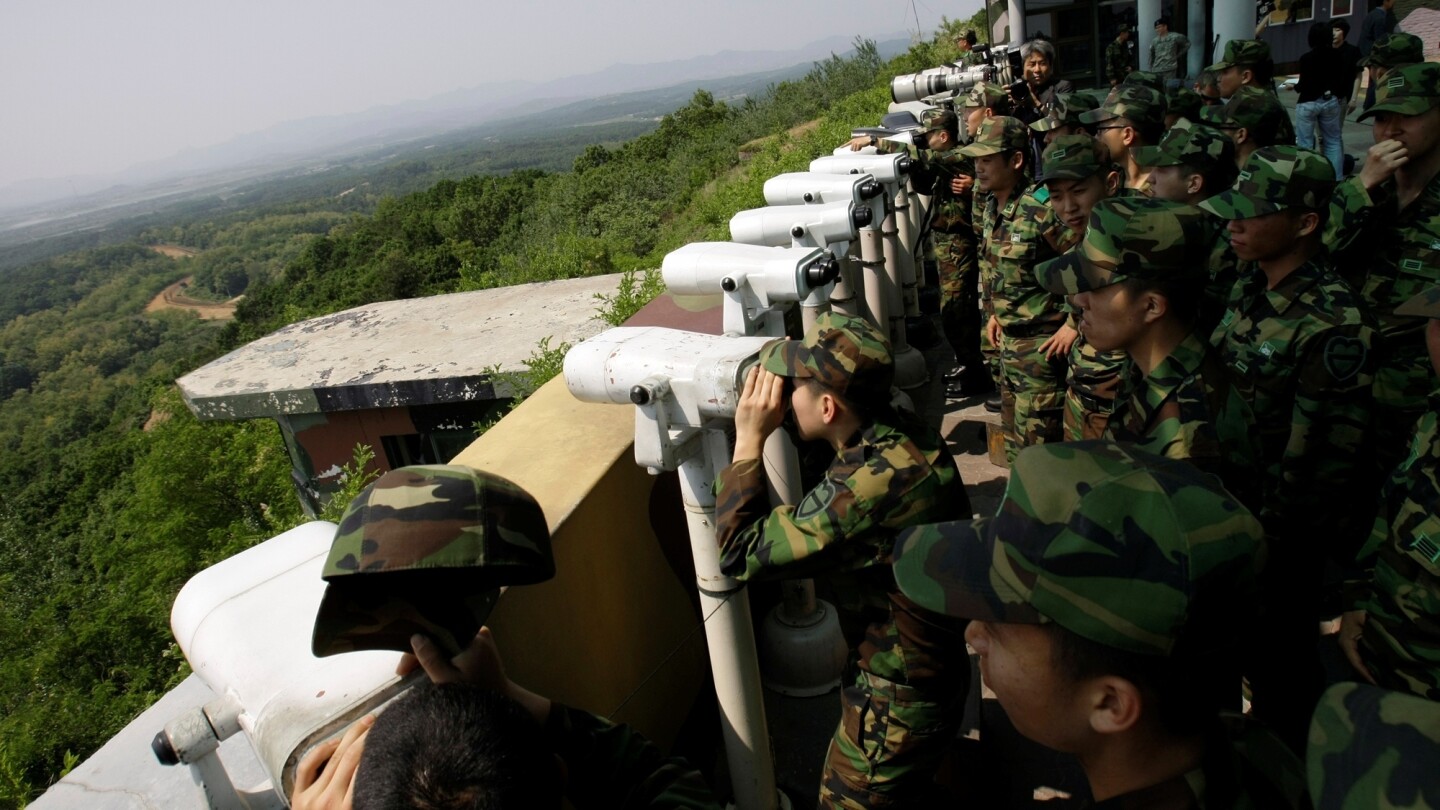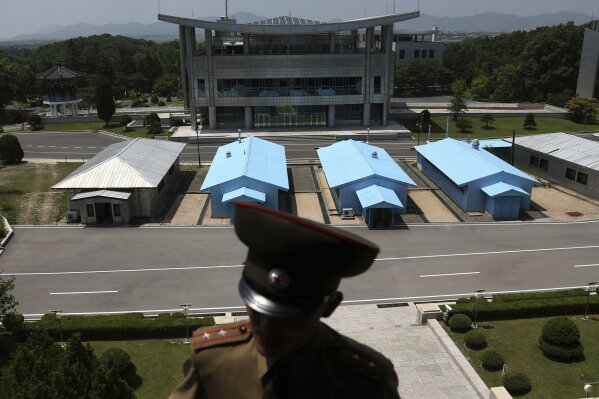TOKYO (AP) — Blue-roofed huts, a raised slab of concrete and some raked gravel are all that separate the rival Koreas at Panmunjom, a rare point of close contact along the most heavily armed border in the world.
People have stepped across that thin dividing line, but only under very special circumstances, passing between two nations that are still technically at war.
Former U.S. President Donald Trump and North Korean leader Kim Jong Un did it. Former South Korean President Moon Jae-in walked hand-in-hand with Kim across the border. In 2017, a defecting North Korean soldier stumbled across nearby, under heavy gunfire, in a mad dash for sanctuary.
And this week an American soldier facing possible military discipline dashed over the line, causing an international incident that could worsen already uneasy relations on the Korean Peninsula, where the North has staged dozens of missile tests this year as it works to advance a nuclear program aimed at targeting the continental United States.
Much of the 4-kilometer-wide (2 1/2 mile-wide) Demilitarized Zone is wilderness, guarded by mines, barbed wire fences, tank traps and combat troops on both sides. It’s jointly overseen by the American-led U.N. Command and by North Korea.
But Panmunjom, a once-obscure farming village inside the DMZ that now hosts a “Joint Security Area,” is different. It’s a tourist site, albeit one of the world’s most surreal.
Seven decades of division since the end of the Korean War are made palpable by the South Korean soldiers who stand on guard, glaring across the border. North Korea soldiers are there, too, but less visible most days.
The Korean Peninsula was split at the end of World War II into a Soviet-controlled North and U.S.-backed South. It was in Panmunjom that U.S. and North Korean forces negotiated and eventually signed the 1953 truce that ended fighting in the Korean War and created the DMZ. There has never been a formal peace treaty, the village is formally administered by neither North or South Korea.
A carnival atmosphere can occasionally take hold in the area around Panmunjom, with souvenir shops, fast-food restaurants and throngs of tourists, though North Korea has been closed to tourism because of the pandemic since early 2020. The South Korean side has an amusement park not far from the village, and used to have a Popeyes chicken outlet.
Tours to the southern side reportedly drew around 100,000 visitors a year before the pandemic, when South Korea restricted gatherings to slow the spread of COVID. The tours resumed fully last year.
The area is also a throwback to the Cold War, a time of barely contained, simmering hostility between nuclear-armed rivals. There have been ax killings, U.S. bomber fly-bys and desperate defections along the border. U.S. presidents and senior officials regularly make the trip to the southern side of the DMZ for photo ops. The village is formally administered by neither North or South Korea.
The tourist area is a short drive from Seoul, which lies in easy artillery range of the estimated 70% of North Korea’s 1.2 million troop arrayed along the border.
There are occasional verbal exchanges between U.S. soldiers and their North Korean counterparts, often businesslike, at the Demarcation Line in the village.
It’s a thrill, perhaps, for the tourists, but it’s a dangerous proposition for the soldiers keeping watch, often only meters (feet) apart.
Months and years often pass without incident, but when something happens, it can be violent.
In 1976, North Korean soldiers axed two American army officers to death, and the United States responded by flying nuclear-capable B-52 bombers toward the DMZ in an attempt to intimidate the North.
In 1984, North Korean and U.N. Command soldiers traded shots when a Soviet citizen defected by sprinting to the southern side. Three North Korean soldiers and one South Korean soldier were killed.
In 2017, when a fleeing North Korean soldier crashed his jeep and then sprinted across the border, North Korean soldiers fired handguns and rifles before southern soldiers could drag the wounded soldier to safety. South Korean soldiers didn’t return fire.
North Koreans who flee to South Korea — an estimated 30,000 since the end of the 1950-53 Korean War — have mostly used the more porous border between North Korea and China.
In 2019, during a period that saw unprecedented diplomacy between North Korea and the United States and South Korea, Trump and Kim Jong Un shook hands at the borderline. Trump stepped over the concrete slab, becoming the first U.S. president to set foot in North Korean territory.
Here’s the latest for Wednesday July 19th: Defense Sec. Austin says U.S. soldier likely in North Korean custody; Trump says he received Justice Department target letter; Phoenix sets new heat record; Tropical storm closes in on Hawaii.
On Tuesday, Private 2nd Class Travis King, 23, became the first known American detained in the North in nearly five years, after he bolted across the border at Panmunjom.
King, who had served nearly two months in a South Korean prison, had been held on assault charges and was being sent to Fort Bliss, Texas, on Monday, where he could have faced additional military disciplinary actions and discharge from the service. But officials say that instead of getting on the plane, he left the airport and later joined a tour of Panmunjom.


